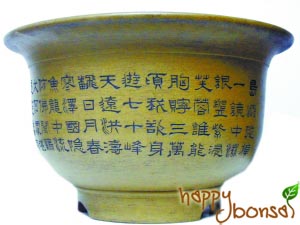 Authentic bonsai pots have big drainage holes. To prevent soil from falling through a drainage hole, we can cover the drainage hole inside the bonsai pot with a piece of plastic drainage mesh (or drainage screen).
Authentic bonsai pots have big drainage holes. To prevent soil from falling through a drainage hole, we can cover the drainage hole inside the bonsai pot with a piece of plastic drainage mesh (or drainage screen).
Many online bonsai supply shops sell plastic drainage mesh for bonsai pots, and they sell these drainage meshes in many different sizes. I would suggest one to buy bigger sheets of drainage mesh, at least 6” x 6”, and cut to the size needed.
Some of us like to use a bonsai wire to keep the drainage mesh in place, yet, usually the weight of the potting soil will help keep the drainage mesh in place for us. We can always check the bottom of our bonsai pot after repotting to ensure the drainage mesh hasn’t been moved.
The material of plastic drainage mesh is fairly flexible, yet rigid enough that the drainage mesh won’t sag under the weight of the potting mix and water that are pressing down on it in the bonsai pot. While using the regular plastic or metal window screen wire which we can find in hardware stores is not recommended, if you just have to use one, you must make sure the openings of the drainage mesh are large enough that they won’t be clogged up by your potting mix. In addition, the material must be thick enough so that it won’t sag under the weight of the potting soil and water in the bonsai pot. Since drainage mesh is one of the least expensive bonsai tools we need for our bonsai tree care, we might as well get the proper stuff.


























